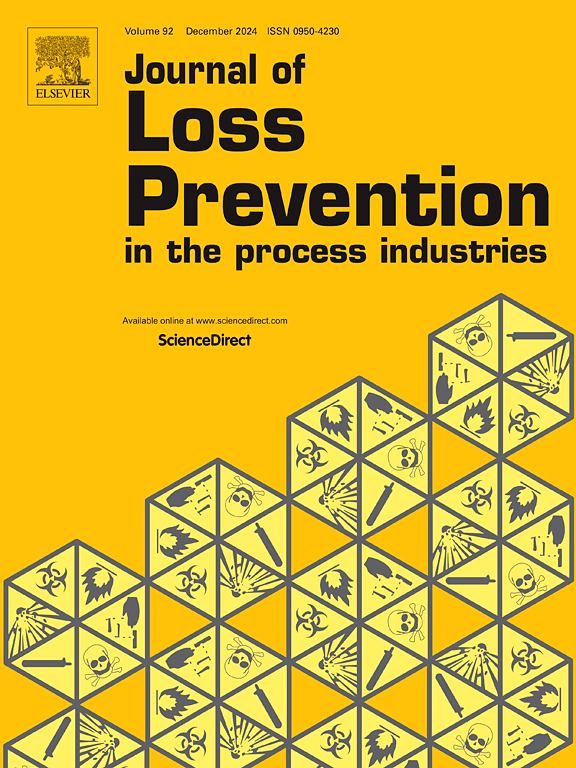Large eddy simulations of electrification of liquid dielectrics in channel flow
IF 3.6
3区 工程技术
Q2 ENGINEERING, CHEMICAL
Journal of Loss Prevention in The Process Industries
Pub Date : 2024-10-31
DOI:10.1016/j.jlp.2024.105465
引用次数: 0
Abstract
In this paper we present a computational study of electrification of liquid dielectrics in channel flow and at moderate turbulence intensities. For purposes of computational savings this study consists of large eddy simulations, according to which the large turbulent scales are directly resolved by the computational grid while the effect of the smaller unresolved scales is suitably modeled. First we examine different subgrid-scale models for the electric charge density. Their efficacy is then assessed via comparisons with results from direct numerical simulations at low turbulence intensities. According to our comparisons and analysis, the most efficient model is the one based on the eddy diffusivity approach and the introduction of the turbulent electric Schmidt number. Subsequently, we present numerical results of electrification of benzene in channel flow and at different Reynolds numbers. Herein we discuss the various stages of the electrification process and the variation of the total charge and streaming current with the turbulence intensity. According to our findings, the increase of the turbulence intensity rises dramatically not only the amount of charge transported in the bulk of the fluid but also the rate at which this transport takes place. Finally, we present results for the statistics of the charge density, which provide additional insight about the distribution of the electric charges in the liquid.
通道流中液体电介质电气化的大涡流模拟
本文介绍了在中等湍流强度下对通道流中液体电介质电化的计算研究。为了节省计算费用,本研究采用了大涡度模拟,根据这种方法,大的湍流尺度由计算网格直接解析,而较小的未解析尺度的影响则被适当地建模。首先,我们研究了电荷密度的不同子网格尺度模型。然后,通过与低湍流强度下的直接数值模拟结果进行比较,评估这些模型的有效性。根据我们的比较和分析,最有效的模型是基于涡扩散方法和引入湍流电施密特数的模型。随后,我们展示了在不同雷诺数条件下通道流中苯电化的数值结果。在此,我们讨论了电化过程的各个阶段以及总电荷和流动电流随湍流强度的变化。根据我们的研究结果,湍流强度的增加不仅会使流体中的电荷传输量急剧增加,还会使传输速率急剧上升。最后,我们介绍了电荷密度的统计结果,这些结果提供了有关液体中电荷分布的更多信息。
本文章由计算机程序翻译,如有差异,请以英文原文为准。
求助全文
约1分钟内获得全文
求助全文
来源期刊
CiteScore
7.20
自引率
14.30%
发文量
226
审稿时长
52 days
期刊介绍:
The broad scope of the journal is process safety. Process safety is defined as the prevention and mitigation of process-related injuries and damage arising from process incidents involving fire, explosion and toxic release. Such undesired events occur in the process industries during the use, storage, manufacture, handling, and transportation of highly hazardous chemicals.

 求助内容:
求助内容: 应助结果提醒方式:
应助结果提醒方式:


